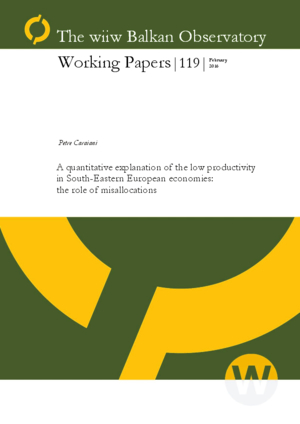A quantitative explanation of the low productivity in South-Eastern European economies: the role of misallocations
Abstract
It is well known that Southeast Europe is the least developed area in Europe. Using a methodology based on the idea of heterogeneous firms, this paper studies the degree to which firm heterogeneity and resource misallocation can explain the lower TFP in Southeast Europe. The results show a significant degree of heterogeneity and resource misallocation, although the results are sensitive to the calibration used. There are evidences that firm-level productivity depends on firm size, while taxation negatively
influences it. There is also some evidence that foreign-owned firms are more competitive, as are exporting firms. Results are generally robust across the various specifications used, but less so relative to the measure of productivity used. Additional evidences suggest that infrastructure-related obstacles as well as institutional instability drive the output distortion, while no factor is underlined as a significant driver of capital distortions, suggesting the need for better data sources for the latter.
Keywords: total factor productivity, firm heterogeneity, South East Europe
JEL classification: D24, O47, L25
Countries covered: SEE
Research Areas: Macroeconomic Analysis and Policy
